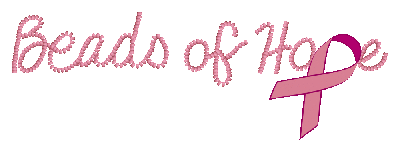Hormone therapy, also called endocrine therapy, is a common way to treat breast cancer, the most diagnosed cancer in the world. Hormone therapy for cancer should not be confused with hormone replacement therapy (HRT), which is used to treat menopause (and is also a risk factor for breast cancer), or hormone therapy used by transgender patients in their gender transition process.

How Does Hormone Therapy for Breast Cancer Work?
The natural hormone estrogen helps fuel cancer cell growth. Most types of hormone therapy use medications to fight this growth by limiting estrogen in the body or by limiting its ability to attach to cancer cells.
When Is Hormone Therapy Used?
Hormone therapy is a common breast cancer treatment, often used alongside breast surgery, radiation, immunotherapy, and chemotherapy. Hormone therapy can be given as a cancer preventative, used before surgery (neoadjuvant therapy) or after surgery (adjuvant therapy) to keep the cancer from returning, or used as treatment if the cancer has come back or spread. Most treatment courses last 5 years.
Risk-Reducing Mastectomy and Surgery for Breast Cancer Prevention
In two-thirds of all breast cancer cases, tumor cells are what’s called hormone receptor-positive. This means that the tumors have proteins (receptors) for the estrogen or progesterone hormone. Cancers that have estrogen receptors are called ER-positive and cancers with progesterone receptors are called PR-positive. These types of cancers respond well to hormone therapy because the tumors are affected by hormones.
Triple-negative breast cancer (TNBC) is called triple negative because it has neither a receptor for estrogen, progesterone, nor HER2. TNBC is more likely diagnosed in Black women, young women (under 40), and those with the BRCA gene. It can’t be treated with hormone therapy, which is one of several reasons that triple-negative breast cancer is so hard to treat.
Less Stress for Women Who Know Their Genetic Risk for Breast Cancer
Hormone Therapy Drugs & Side Effects
Tamoxifen
Tamofixen is a hormone therapy drug used to prevent breast cancer in women at high risk or women who have had breast surgery as a result of a hormone receptor-positive breast disease. It’s usually used for young women with early-stage breast cancer. Common side effects include menstrual cycle changes, vaginal discharge or dryness, and hot flashes. Rarely some women experience tumor flares (a painful bone condition), high calcium levels in the blood, endometrial cancer, eye issues, uterine sarcoma, blood clots or strokes.
Toremifene (Fareston)
Like Tamoxifen, Toremifene is a SERM (selective estrogen receptor modulator), meaning it acts as an anti-estrogen in breast cells only, blocking estrogen from attaching to tumor cells. It works similarly to Tamoxifen but it is usually only prescribed for post-menopausal women with breast cancer that has spread (metastatic breast cancer). It has similar side effects as Tamoxifen.
Get our “Thriver Thursdays” Email
Get all the latest cancer prevention and treatment news plus upcoming survivor programs, straight to your inbox every Thursday. Your privacy is important to us.
Fulvestrant (Faslodex)
Fulvestrant is a selective estrogen receptor degrader (SERD), meaning it attacks (degrades) the estrogen receptors throughout the entire body. It is prescribed to metastatic breast cancer patients alone, or after other hormone therapy drugs have been tried. Common side effects include bone pain, nausea, hot flashes, headache, or pain at the injection site.
Aromatase Inhibitors (AIs)
Aromatase is an enzyme found in body fat that produces estrogen (and one of the reasons obesity is a risk factor for breast cancer). Aromatase inhibitors (AIs) are a class of drugs that stop the body from producing the estrogen formed from aromatase. Because the ovaries also produce a significant amount of estrogen in pre-menopausal women, AIs are more effective in post-menopausal women, or younger women in combination with ovary suppressing drugs. AI drugs include Letrozole (Femara), Anastrozole (Arimidex), and Exemestane (Aromasin). Common side effects of AIs include vaginal dryness, muscle pain, hot flashes, and joint and bone pain. Less common side effects include bone thinning (osteoporosis) and arthritis-like muscle and joint pain.
Ovary Suppression
Suppressing ovary function significantly reduces estrogen production in pre-menopausal women. Ovaries can be suppressed through the removal of the ovaries (called an oophorectomy or ovarian ablation) or drugs. Common ovary suppression drugs include chemotherapy drugs and goserelin (Zoladex) and leuprolide (Lupron), types of luteinizing hormone-releasing hormone (LHRH) agonists. Because ovary suppression effectively causes women to become post-menopausal, the side effects are similar to menopause: hot flashes, vaginal dryness, mood swings, and night sweats.
Remember, no matter your treatment plan, it’s important to follow the full regimen. A 2016 study published in the Journal of Clinical Oncology showed that not sticking to a prescribed hormone therapy plan was associated with a higher recurrence of breast cancer.
Have questions about your hormone therapy treatment options or need help with insurance or payments? SHAREing & CAREing is here for you! We are a Queens-based non-profit founded and run by cancer survivors. Contact us for individual support, attend a monthly support group meeting or join our online Facebook group. We offer free patient navigation services, links to free and reduced cost medical care, transportation assistance, and educational prevention workshops offered to schools and the community.
SOURCES
- Hormone Therapy For Breast Cancer, American Cancer Society
